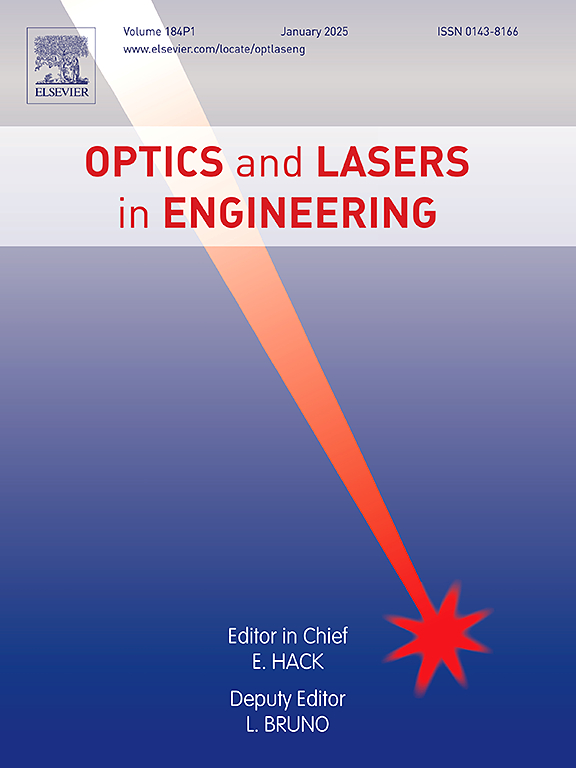Blind source separation-based reconstruction algorithm of air bubbles holograms
IF 3.5
2区 工程技术
Q2 OPTICS
引用次数: 0
Abstract
This article aims firstly to review some results on two-dimensional air bubble modeling necessary when calculating in-line holograms for such objects. Secondly, the blind source separation method (BSS) applied to estimate the most probable shape of the object that generates the holograms either theoretically or experimentally is recalled. The result of this study demonstrates that the opaque ring is the most probable theoretical model to simulate the hologram of bubbles and also to interpret the reconstructed images. Indeed, in [1], the opaque ring was a theoretical hypothesis. After the probabilistic method of this study, the theoretical hypothesis is validated and we can confirm the convergence of two methods (theoretical and probabilistic). Besides, we show that BSS is an interesting method for discriminating between opaque objects (e.g. a perfectly absorbing particle) and the symmetry of a revolution phase object. Finally, a note is made on the possibility of estimating the optical index of the bubble, which constitutes a perspective of this initial work.
基于盲源分离的气泡全息图重建算法
本文首先回顾了计算此类物体的在线全息图时所必需的二维气泡建模的一些结果。其次,回顾了盲源分离方法在理论上和实验上用于估计产生全息图的最可能物体形状的方法。研究结果表明,不透明环是模拟气泡全息图和解释重建图像的最可能的理论模型。事实上,在b[1]中,不透明环只是一个理论假设。在本研究的概率方法之后,理论假设得到验证,我们可以确认两种方法(理论和概率)的收敛性。此外,我们还证明了BSS是一种区分不透明物体(例如完全吸收的粒子)和旋转相位物体的对称性的有趣方法。最后,说明了估计气泡的光学指数的可能性,这构成了这一初步工作的一个观点。
本文章由计算机程序翻译,如有差异,请以英文原文为准。
求助全文
约1分钟内获得全文
求助全文
来源期刊

Optics and Lasers in Engineering
工程技术-光学
CiteScore
8.90
自引率
8.70%
发文量
384
审稿时长
42 days
期刊介绍:
Optics and Lasers in Engineering aims at providing an international forum for the interchange of information on the development of optical techniques and laser technology in engineering. Emphasis is placed on contributions targeted at the practical use of methods and devices, the development and enhancement of solutions and new theoretical concepts for experimental methods.
Optics and Lasers in Engineering reflects the main areas in which optical methods are being used and developed for an engineering environment. Manuscripts should offer clear evidence of novelty and significance. Papers focusing on parameter optimization or computational issues are not suitable. Similarly, papers focussed on an application rather than the optical method fall outside the journal''s scope. The scope of the journal is defined to include the following:
-Optical Metrology-
Optical Methods for 3D visualization and virtual engineering-
Optical Techniques for Microsystems-
Imaging, Microscopy and Adaptive Optics-
Computational Imaging-
Laser methods in manufacturing-
Integrated optical and photonic sensors-
Optics and Photonics in Life Science-
Hyperspectral and spectroscopic methods-
Infrared and Terahertz techniques
 求助内容:
求助内容: 应助结果提醒方式:
应助结果提醒方式:


